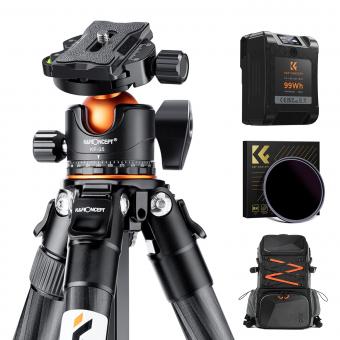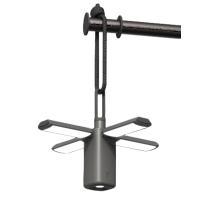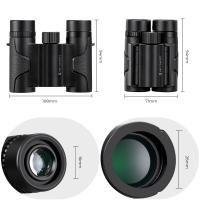Which Tripod Head ?
There are various types of tripod heads available, each serving different purposes. Some popular options include ball heads, pan-tilt heads, and gimbal heads. The choice of tripod head depends on the specific needs and preferences of the photographer or videographer.
1、 Ball Head
The choice of tripod head ultimately depends on the specific needs and preferences of the photographer. However, one popular option is the Ball Head.
A Ball Head is a versatile tripod head that allows for smooth and precise movement in multiple directions. It consists of a ball and socket joint, which enables the photographer to easily adjust the camera's position and angle. This flexibility makes it ideal for various types of photography, including landscape, portrait, and wildlife.
One of the main advantages of a Ball Head is its quick and easy setup. It typically features a single locking mechanism that allows for fast adjustments and secure positioning. This is particularly useful when capturing fast-moving subjects or when working in dynamic environments.
Additionally, Ball Heads are known for their stability and durability. They can support heavy camera equipment and provide a stable platform for long exposure shots or telephoto lenses. Many modern Ball Heads also come with features like panoramic rotation, bubble levels, and quick-release plates, further enhancing their functionality.
However, it's important to note that Ball Heads may not be the best choice for every situation. They may not offer the same level of precision as specialized heads like gimbal heads for wildlife photography or geared heads for architectural photography. Additionally, some photographers may find the ball movement less intuitive compared to other types of tripod heads.
In conclusion, the Ball Head is a popular choice for photographers looking for versatility, ease of use, and stability. However, it's essential to consider individual shooting requirements and explore other tripod head options to make an informed decision.

2、 Pan/Tilt Head
Which tripod head you choose depends on your specific needs and preferences. One popular option is the Pan/Tilt Head, which offers versatile movement and control over your camera positioning.
A Pan/Tilt Head allows you to pan horizontally and tilt vertically, giving you the ability to capture a wide range of shots. This type of head is commonly used in photography and videography, as it provides smooth and precise movements. It is especially useful for capturing landscapes, panoramas, and tracking shots.
When choosing a Pan/Tilt Head, consider factors such as load capacity, weight, and ease of use. Ensure that the head can support the weight of your camera and any additional equipment you may use, such as telephoto lenses or external flashes. Look for a head that is lightweight and compact if you frequently travel or shoot on location.
Additionally, consider the ease of use and adjustability of the head. Look for features such as quick-release plates, bubble levels, and adjustable tension controls. These features can make it easier to set up and adjust your camera quickly and accurately.
It's also worth noting that there are different variations of Pan/Tilt Heads available, including geared heads and fluid heads. Geared heads offer precise control over camera movements, while fluid heads provide smooth and fluid motion. Consider your shooting style and preferences when choosing between these options.
Ultimately, the best Pan/Tilt Head for you will depend on your specific needs and shooting style. It's always a good idea to read reviews, compare different models, and try them out in person if possible to find the one that suits you best.

3、 Gimbal Head
Which tripod head is best for you depends on your specific needs and preferences. One popular option is the Gimbal Head, which offers smooth and fluid movement for tracking moving subjects, making it ideal for wildlife and sports photography.
Gimbal heads are designed to support heavy telephoto lenses and provide stability while allowing for easy panning and tilting. They feature a unique gimbal mechanism that balances the weight of the camera and lens, making it effortless to track fast-moving subjects. This is especially useful when shooting birds in flight or capturing action shots in sports photography.
One of the latest advancements in gimbal heads is the introduction of carbon fiber materials, which make them lighter and more portable without compromising stability. This is particularly beneficial for photographers who need to carry their equipment over long distances or in challenging terrains.
Additionally, some gimbal heads now come with built-in Arca-Swiss compatible quick release plates, allowing for easy and secure attachment and detachment of the camera and lens. This feature saves time and ensures a stable connection between the equipment and the tripod head.
It's important to note that gimbal heads can be quite expensive compared to other tripod heads, and they may not be necessary for all types of photography. If you primarily shoot landscapes or portraits, a ball head or pan-tilt head may be more suitable for your needs.
Ultimately, the choice of tripod head, whether it's a gimbal head or another type, should be based on your shooting style, the type of photography you do, and your budget.

4、 Fluid Head
Which tripod head is best for you depends on your specific needs and preferences. One popular option is a fluid head, which offers smooth and precise movements, making it ideal for video shooting and panning. Fluid heads use a hydraulic system to control the movement of the camera, allowing for smooth pans and tilts without any jerky or abrupt motions.
Fluid heads are commonly used by professional videographers and filmmakers who require precise control over their camera movements. They are also popular among wildlife photographers who need to track fast-moving subjects smoothly. The fluid head's ability to provide smooth and controlled movements makes it a great choice for capturing action shots or shooting in challenging conditions.
When choosing a fluid head, consider factors such as the weight capacity, size, and compatibility with your camera and tripod. Some fluid heads offer additional features like adjustable drag control, quick-release plates, and counterbalance systems, which can enhance your shooting experience.
It's worth noting that technology is constantly evolving, and new tripod heads are being introduced regularly. Therefore, it's essential to stay updated with the latest models and read reviews from trusted sources to make an informed decision.
Ultimately, the best fluid head for you will depend on your specific shooting needs, budget, and personal preferences. It's recommended to try out different options and see which one feels most comfortable and suits your shooting style.





































